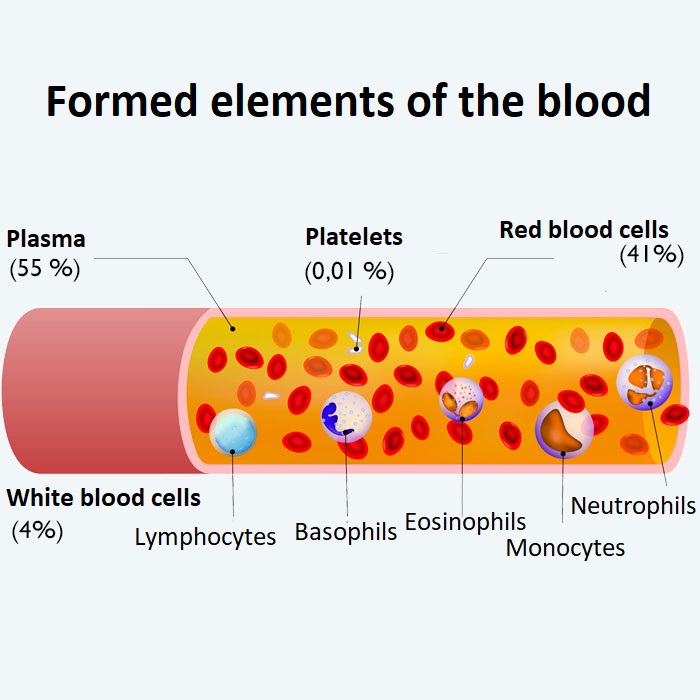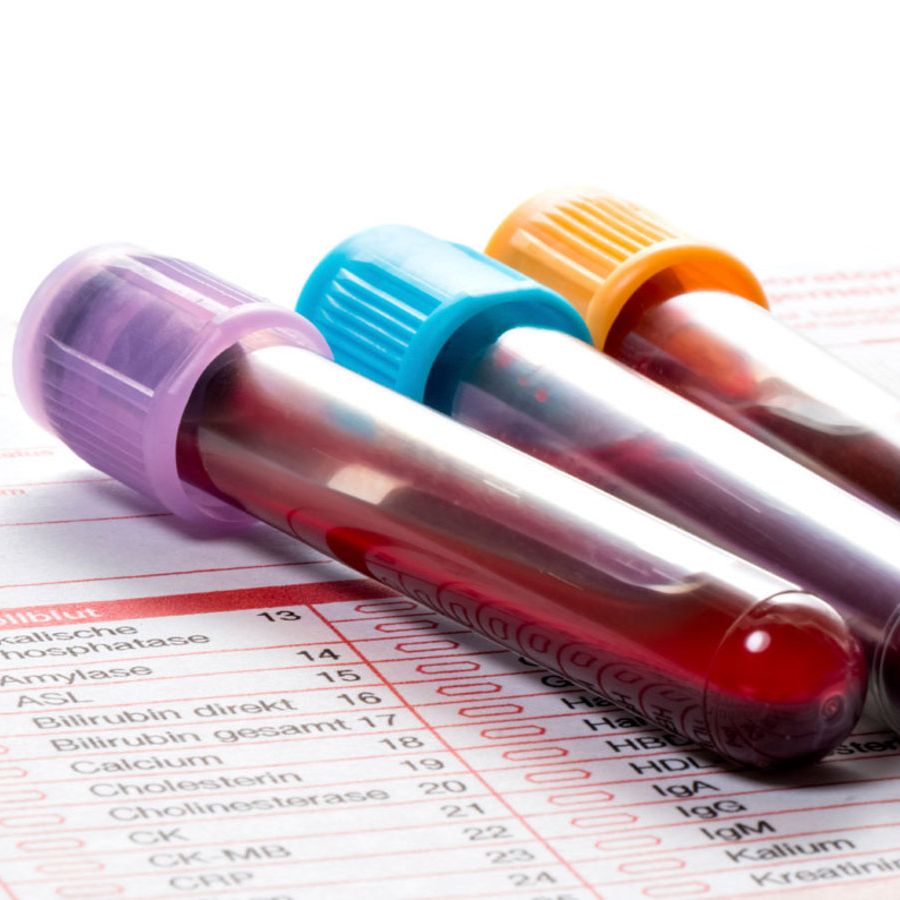Blood count
A blood count is a complex test used to determine the relative and absolute number, type, size, shape, and other physical characteristics of the formed elements (red blood cells, white blood cells, platelets) present in the blood.
What does the test show?
Blood count provides information about the red blood cell, white blood cell, and platelet populations present in the blood plasma. Based on the results, the doctor can conclude the inflammatory processes in the body, blood loss, dehydration, diagnose anaemia, coagulation disorders, tumours of the hematopoietic system (lymphoma, leukaemia), and other hematopoietic diseases (e.g. bone marrow disease).
Red blood cells (RBCs) are circular, flat in the middle cells without nucleus. They contain haemoglobin, which is used to deliver oxygen to cells within the body. Blood counts also determine the number of red blood cells present in the blood plasma, the mean cell volume (MCV), the volume within the whole blood volume (HCT – haematocrit), and the haemoglobin level (HGB), as well as the content (MCH), mean cell haemoglobin concentration (MCHC).
The primary function of white blood cells (WBCs) is to fight infections and develop a rapid immune response. There are five different types of white blood cells present in the blood plasma in roughly constant proportions: monocytes, lymphocytes, eosinophils, basophils, and neutrophils. In an infection, the appropriate cells attack and kill the bacteria, virus or fungus that is causing the infection. The blood count can be used to determine if there are enough white blood cells for protection, and to determine the number and relative proportions of each cell type.

Platelets (thrombocyte – THR) are cell fragments that play an important role in blood clotting. The blood count shows the number of platelets in the blood plasma as well as the mean platelet volume (MPV).
In which cases is it recommended to perform the test?
Your doctor may order a blood count for general screening purpose, or to diagnose the cause of an infection, inflammation, bruising or bleeding, and to monitor the course of the disease.
What sample is needed for the test?
A blood sample taken from a vein is needed to determine the blood count.
What can the result indicate?
The obtained result contains the parameters of the formed elements in the blood, the numerical value of which may vary from laboratory to laboratory, depending on the applied test method, and thus may be considered normal, elevated or low. For this reason, never compare your results with values found on the Internet, and in all cases consult the specialist who ordered the test.

Elevated red blood cell (RBC) counts may indicate fluid loss, dehydration, congenital heart disease, obstructive pulmonary disease, or increased bone marrow function.
Decreased red blood cell counts may indicate bleeding, anaemia, bone marrow insufficiency, hematopoietic disease, and malnutrition (low folic acid, iron, or vitamin B12 and B6 intake). Women generally have lower red blood cell counts than men, especially during pregnancy. Their number also decreases with age.
Mean cell volume (MCV) determines the volume of red blood cells. If the MCV value is elevated, the red blood cells are larger than average (macrocytes), which may indicate anaemia caused by B12 or folic acid deficiency. In case of a reduced value, the red blood cells are smaller than average (microcytes), which can be observed in case of anaemia caused by iron deficiency.
A decrease in haemoglobin (HGB) levels below the normal range is accompanied by a decrease in red blood cell count, indicating anaemia. If their value rises above the normal range, polycythaemia, increased red blood cell production may be in the background.
A decrease in the amount of haemoglobin per red blood cell, i.e. a decrease in haemoglobin content (MCH), may indicate iron deficiency, an elevated level of vitamin B12 or folic acid deficiency, or megaloblastic anaemia.
A decrease in the mean haemoglobin concentration (MCHC) of red blood cells may indicate iron deficiency anaemia, and a higher value is characteristic of certain anaemic conditions.
The haematocrit (HCT) value shows the ratio of the cellular components of the blood to the total blood volume, so its value is given as a percentage or in decimal form. Haematocrits reflect the number of red blood cells: if the number of red blood cells decreases or increases, the change is followed by the number of haematocrits. Decreased haematocrit level indicates anaemia, a lack of a vitamin, or possibly cirrhosis. High haematocrit value may indicate dehydration but poor lung function or polycythaemia, too.
White blood cells (WBC) are dynamically changing cell populations, the number of which varies depending on the inflammatory processes that take place in the body. Each type of white blood cell (monocytes, lymphocytes, eosinophils, basophils, and neutrophils) indicates a different chronic or acute disease. Their relative numbers can be determined using a qualitative blood count.
Elevated white blood cell counts indicate an infection, inflammation, or leukaemia, but may also be a side effect of certain medications.
Decreased white blood cell counts can occur in case of autoimmune diseases, severe infections, bone marrow failure, liver or spleen diseases, or as a side effect of medications or chemotherapy or radiation therapy.
A decrease in the number of platelets (THR or PLT) indicates abnormal bleeding or haemorrhage, and an escalation in the number indicates an increased chance of blood clots. If the value of the result is too low, the test may need to be repeated using a sodium citrate tube that inhibits coagulation.
The mean platelet volume (MPV) provides information on the extent of platelet production in the bone marrow. An increase in the value indicates the active production of platelets, usually as a result of severe blood loss or infection causing platelet death. A low value may indicate bone marrow damage.
What to do after the test?
The values in the finding do not diagnose any disease on their own; in all cases, consult the treating physician, internist or haematologist to determine the exact diagnosis and required therapy.

